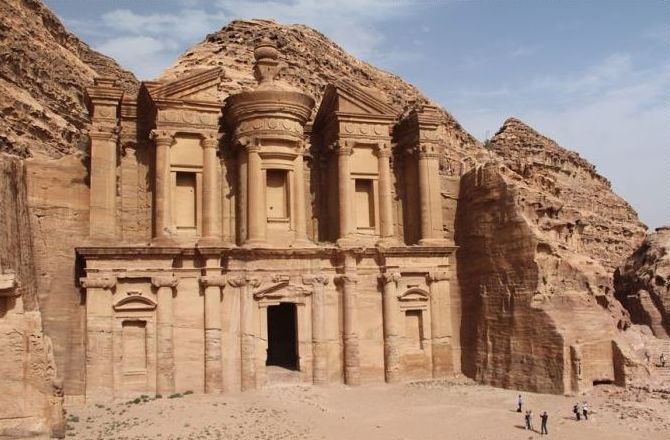|
|
Mountain Temple
|
In Judaism, the ancient Hebrew texts refer not to temples, the word having not existed yet, but to a "sanctuary", "palace" or "hall". Each of the two ancient temples in Jerusalem was called Beit Hamikdash, which translates literally as "the Holy House."
The Temple Mount in Jerusalem is the site where the First Temple of Solomon and the Second Temple were built. At the center of the structure was the Holy of Holies where only the high priest could enter. The Temple Mount is now the site of the Islamic shrine, the Dome of the Rock (c. 690).
The Greek word synagogue came into use to describe Jewish places of worship during Hellenistic times and it, along with the Yiddish term shul, and the original Hebrew term Bet Knesset ("House of meeting") are the terms in most universal usage.
From the beginning of the nineteenth century, the word "temple" began to be used for Jewish houses of worship, almost exclusively by the followers of Reform Judaism, first in Germany, then in other countries, especially in the United States, as in Temple Beth-El. Orthodox Judaism considers this usage inappropriate, as it does not consider synagogues a replacement for the Temple in Jerusalem (there were local places of worship contemporaneous with the existence of the Temple, e.g. the one that can be seen at Masada).
|
|









